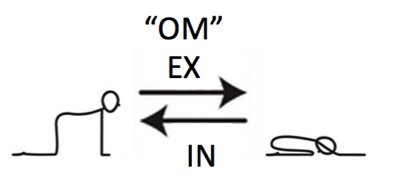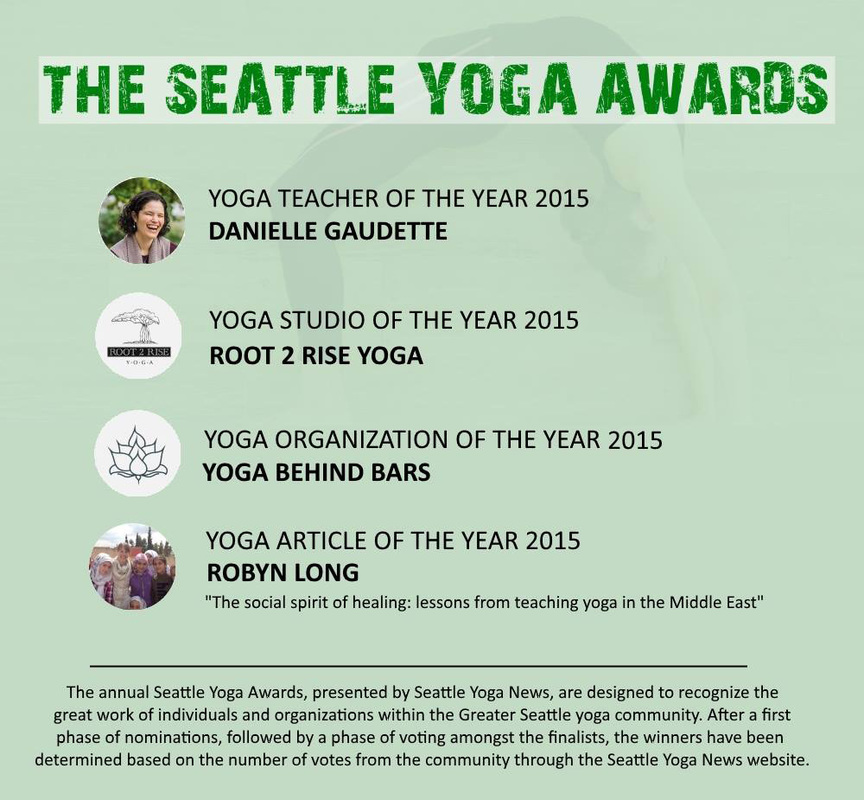|
Interested in incorporating mantras into your daily yoga practice? Bringing them into your asana practice is an excellent way to strengthen focus and deepen the benefits of yoga. Here are a few tips and an introduction exercise for beginners. What is a mantra? A mantra is a syllable, group of words, or phrases, which can be recited orally or silently. In Sanskrit, it is a term that combines two words: mananat (reflection) and trayate (protection). According to Yoga tradition, when we chant and reflect on a particular mantra we will see and experience the quality of that mantra, and thus we will be protected. For example, mantras that focus on the sun (e.g., sūrya) embody the qualities of light, energy, and radiance. Mantras focused on the moon (e.g., somena) evoke qualities that are cooling and nourishing. Chanting mantras before and during meditation has numerous benefits; it has subtle yet penetrating effects on both mind and body. Chanting, which creates vibrations in the throat, chest, abdomen, and jaw, has been found to stimulate vagal sensory afferents and promote relaxation [1]. Introducing mantra into your asana Using a mantra while practicing yoga postures (asana) is an excellent way to strengthen one’s focus, which in turn deepens one’s practice. Here are a few ways to include mantras in an asana practice:
An example of chanting “Om” on the exhalation in asana Starting with Om
Om is an powerful, yet simple mantra to begin using because it is a bija (seed) mantra. Bija mantras are one syllable and activate specific energy points to balance or purify the mind and body. Om is a sacred word that encompasses all other sounds in the universe. It is the primary sound from which all others emerged. While it is often written “Om”, a more accurate transliteration is “AUM” since there are three distinct sounds that blend together. The mantra represents four states of consciousness. A – is the conscious, or waking, state U– is the unconscious, or dream, state M – is the subconscious, or deep sleep, state There is a pause at the end of AUM, which represents the state of infinite consciousness How to pronounce Om Here are a few tips for pronunciation:
If you choose to chant out loud on the exhalation, the sound should come easily and comfortably. If you feel short of breath or any discomfort, alternate between orally and silently as you build up the breath capacity to chant out-loud. Here's how to try it today Chant Om when you exhale during any forward bending pose, such as Uttanasana (standing forward bend) or chakravakasna (as pictured above). Or during a gentle breathing practice at the end of your practice. The only hard-and-fast rule when chanting is to chant with joy and gratitude from the heart – so don’t hesitate to begin today! Stay tuned for more Monday Mantra tips and sign up for the monthly newsletter with more detailed suggestions for practice. 1. Brown, R.P., Gerbarg P. L. (2005). Yoga: A Breath of relief for Hurricane Katrina refugees. The Journal of Family Practice, Vol. 4, No. 10. http://www.jfponline.com/Pages.asp?AID=2736
0 Comments
This post was written for and originally published on Kids' Adventures website - check out their holistic approaches to after-school programs, which are based on movement, mindfulness, and nutrition. Does it ever feel like there are hundreds of thoughts swirling around inside your head? If so, you know how hard it can be to focus on one activity, thought or feeling when your mind is full. Mindfulness, the practice of present-moment awareness, can help us learn to be more attentive. A key aspect of mindfulness is observing ourselves and our surroundings without judgment. In essence, mindfulness promotes being “in the now” with an open and kind attitude towards others and ourselves. Mindfulness is a positive activity for kids because it helps them learn stress reduction tools. We live in a fast-paced world. Classes in school, dynamics at home, social activities, and digital distractions demand more, faster decisions than ever before. This constant pressure can burden kids with anxiety, trigger worry about the future, and cause them to feel burnt-out. It is mentally and physically exhausting to juggle dozens of choices and evaluate decisions. Kids today need tools that enable them to create space to focus on the task at hand and recognize how they feel. This visualization can illustrate how mindfulness promotes focus. Imagine filling a glass jar with sand and swirling it in circles. Each grain of sand represents a thought you have today. As you twirl the jar around and around, try to focus on only one grain of sand. It might feel impossible – and that’s ok! Now, what happens when you set the jar down onto the counter? It becomes easier to focus on one grain of sand!  There are dozens of ways to practice mindfulness. Yoga is one scientifically proven way for kids to learn and benefit from mindfulness. Yoga programs that promote mindfulness often include:
How does mindfulness in education work to benefit our kids? A growing amount of research shows that kids who practice in mindfulness become more present and have greater control over their emotions. This happens because of an amazing concept called neuroplasticity – our brain’s ability to adapt throughout our lives. Essentially, our brain creates new neural pathways when we perform new actions more frequently. Our mind uses these pathways as a blue print for creating habits. During mindfulness activities, for example, kids repeat actions such as the practice of observing one’s feelings, taking a deep breath to relax, or reflecting on something they are grateful for each day. Over time, these actions lead to happy, healthy habits. How does mindfulness promote stress-reduction? Mindfulness helps kids (and adults!) develop stress reduction skills by:
In addition to stress reduction, these skills clear the way for a range of other benefits. Less stress leads to better sleep, heightened creativity, enhanced focus in school, improved body image, and increased self-confidence. When the burdens of stress are lifted, kids feel a deeper sense of peace and calm. Mindfulness in action
I have taught (and learned) mindfulness practices with kids for the last six years. My students and I have found that our attention begins with the breath, a concept that ancient yoga teachers wrote about thousands of years ago. When we engage in the simple act of breathing consciously – e.g., feeling our belly rise when we inhale and relax when we exhale – our mind is focused in one direction. Breathing practices are tools that kids can draw upon on a daily basis. For example, in my yoga programs for kids with cancer, I teach participants how to do several types of breathing practices to use if they feel tired, nervous, or sad. Many of them do these practices during medical procedures. One girl did the Peace Breath whenever she received chemotherapy. One day she shared that, “the breathing [practice] helped me forget about the injection and I didn’t feel nervous. I always feel nauseous from the medicine – but the breathing [practice] helped me feel better!” This spring I saw firsthand another example of how mindfulness helps kids with anxiety. I was teaching breathing practices to Syrian children who had fled their homeland because of ongoing violence and conflict. Many of them suffered from difficulty sleeping and nightmares. In class they learned how to do a relaxing breathing practice that they repeated before bedtime each night. Children shared that the practice helped them forget about their worries and fall asleep more quickly. Some of the parents noted their children had fewer nightmares too. When children experience traumatic events, they often lose control of their feelings. Mindfulness enables them to retake that control and experience a sense of relaxation. Try it out! What makes mindfulness practices successful? They have to be FUN! Mindfulness can seem like a complex topic – so keeping activities simple is best. One of my favorite activities is Peace Breath. It’s a fun way to learn how to focus your mind and it promotes a sense of relaxation. Give it a try! Peace Breath For this practice we will say the word "shanti". Shanti means "peace" in Sanskrit. Sanskrit is a language from India. Shanti is the kind of peace where you feel calm AND happy! How do you say Shanti? Start by making the sound "shhh" and slowly saying "aawwn". Just like the name Shawn! Then say the word "tee", and make the "ee" sound at the end last a long time. Let’s practice!
Download a PDF of Peace Breath and see other practices for children. |
It is a tremendous honor that my article on sharing yoga with Syrians won "Yoga Article of the Year" in Seattle Yoga News. Endless gratitude to everyone who was part of and supported this inspiring project.
Archives
July 2017
Categories
All
|





 RSS Feed
RSS Feed